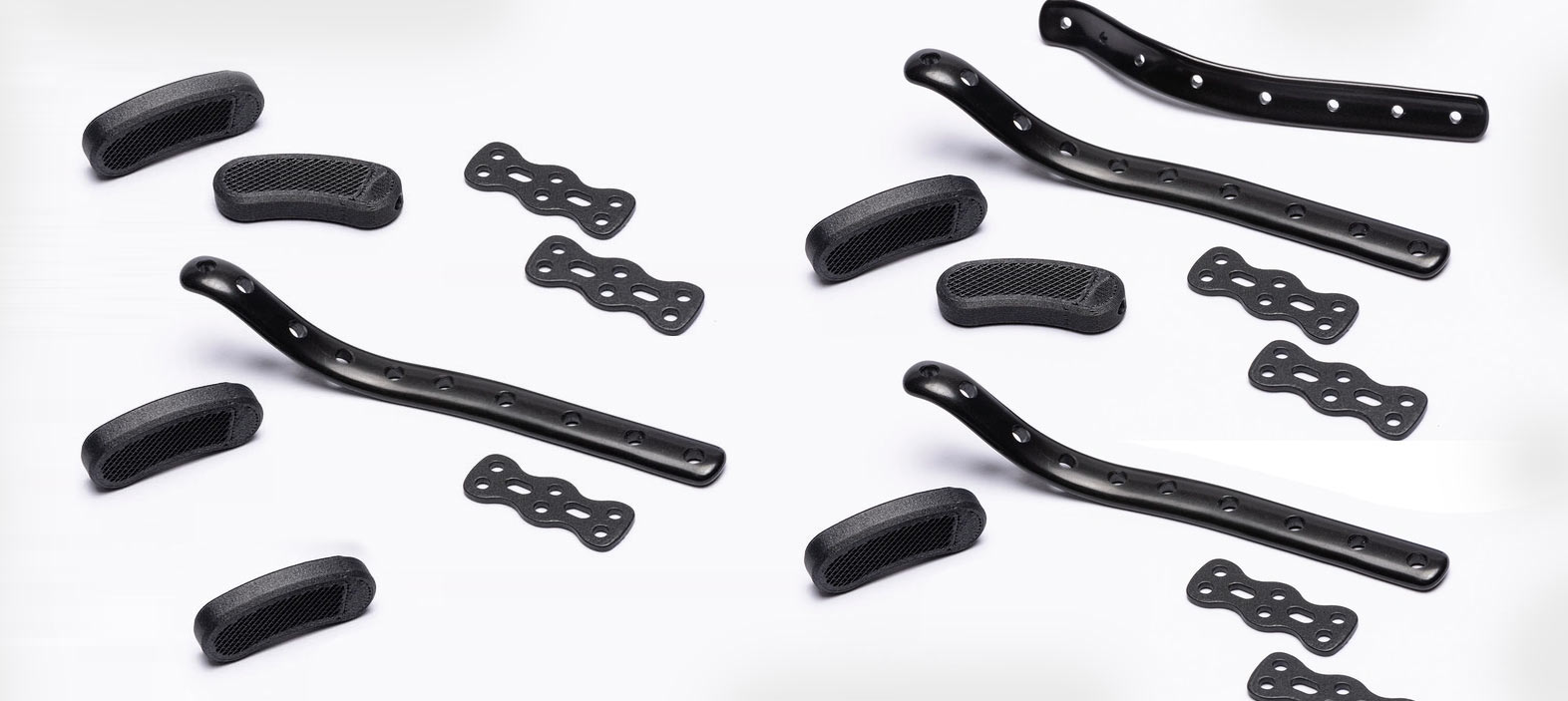
Long-Term Local Effects of Carbon Fiber in Orthopedic Surgery
👁 Reads: 524
The medical profession often utilizes materials such as metal or plastic to support or repair bones in the event of their fracture, or even for joint replacements. Recently, however, there has been much interest in the use of carbon fiber orthopedic parts while performing surgeries, mainly in the repair of bones. Traditionally, carbon fiber has been used in spinal cages, bone fixation screws, orthopedic implants, and cardiac and neurological leads. Why is carbon fiber so special for orthopedic surgery, and what are the long-term local effects of using carbon fiber rods and other forms of carbon fiber orthopedic implants in the human body? Let's dive in and find out!
Carbon Fiber Orthopedic Parts
In orthopedic surgery, doctors use carbon fiber orthopedic parts to help repair or support bones and joints. These parts can come in the form of carbon fiber rods, plates, or screws that are implanted into the body to stabilize fractures or help with joint replacements. The body readily accepts carbon fiber orthopedic parts and it does not break down over time. It has a modulus very close to that of the bone, as well as resistance to long-term fatigue strain. It can be fabricated to match the modulus for cortical and cancellous bone densities. Carbon fiber orthopedic components may avoid the possible problems of stress shielding and bony resorption as often seen with the use of stainless steel and titanium implants in total knee replacements.
Also, the x-ray transparency of carbon fiber composites allows for the fusion to be easily visualized, and because of its non-metal nature, it is compatible with both computed tomography as well as magnetic resonance imaging technologies. Due to the chemical stability and resistance of carbon fiber orthopedic parts, they can be easily sterilized through usual methods such as steam and gamma.
Long Term Local Effects of Carbon Fiber in the Body
While the benefits of carbon fiber are obvious, it is equally important to consider what happens to these implants over time. What kind of response does the body exert to carbon fiber orthopedic implants, and what are some of the long-term local effects?
Biocompatibility and Tissue Response
One of the major parameters when coming to the selection of an implant material is that the body would ultimately accept it without any unnecessary reactions. Carbon fiber orthopedic parts have proved to be very biocompatible in studies to date, thereby not harming the body. The patients generally do not experience strong immune responses such as inflammation or rejection which at times can occur from metal implants.
Clinical research of carbon/carbon implants in mandibular reconstruction revealed no significant inflammatory or infectious reactions after 8 years; the implants were structurally sound. Another long-term study (minimum 15 years) of the local effects of carbon fiber in knee joints showed no acute inflammatory changes in the tissues and underlined that carbon fiber is well tolerated, it can bond directly to the bone.
Moreover, the response of tissues to Carbon fibers is found to be favorable, with a thin layer of fibrous connective tissue. Carbon fibers have been observed to provoke the host to induce collagen synthesis and enhance vascularity where the fibers are laid. Histological analysis of carbon nanotube composites demonstrated that the carbon nano-composite topography had favored muscle tissue bioresorption and thus could last in the body for more than 90 days.
Efficacy and Safety
A case report with a seven-year follow-up indicated that carbon fiber intramedullary nailing for tibiotalocalcaneal arthrodesis did not have adverse effects, and the pain was effectively managed. In another case series, patients who had carbon fiber buttress plating for ankle fractures were followed up 6 to 14 months postoperatively. Results confirmed that all patients went on to union without complications; thus, carbon fiber could be considered safe and functional when used in a buttress plate fashion.
Also, in another clinical and radiological application of Carbon-fiber-reinforced polyether ether ketone implants in distal radius fractures, the study showed that the implant is safe for use in patients with B-type fractures of the distal radius. Radiologic assessment of fracture union was improved and functional outcome improved significantly over 1 year.
Future Outlook on the Application and Production of Carbon Fiber in Orthopedic Parts
The future of carbon fiber orthopedic parts is very bright as the technology is constantly evolving. New ways are constantly being researched to improve the material of carbon fiber to make it stronger, lighter, and cheaper. We will see in times to come more accessibility to carbon fiber rods and implants as the cost of production comes down and surgeons get accustomed to their usage.
Manufacturing carbon fiber ex-fix orthopedics and orthopedic implants is a rather specialized process, and thus carbon fiber manufacturers are significant in the delivery of such advanced medical devices to the market. These carbon fiber orthopedic implants manufacturers like NitPro Composites produce quality, durable, and safe carbon fiber parts for implantation in various forms of surgical procedures. With the increasing demand for carbon fiber in orthopedic surgery, these firms are always undertaking research to make their products even better and cheaper.
Conclusion
Surgical applications of carbon fiber orthopedic components have many interesting advantages, which include strength, lightness, and enhancement in imaging. Patients are returning to life sooner and with fewer complications with carbon fiber rod fiber orthopedic than with older metal implants. While further long-term studies are needed to fully understand the effects of carbon fiber in the body, the present research is quite encouraging. We should expect even greater usage of this outstanding material as innovations continue to emanate from carbon fiber orthopedic implant manufacturers.





